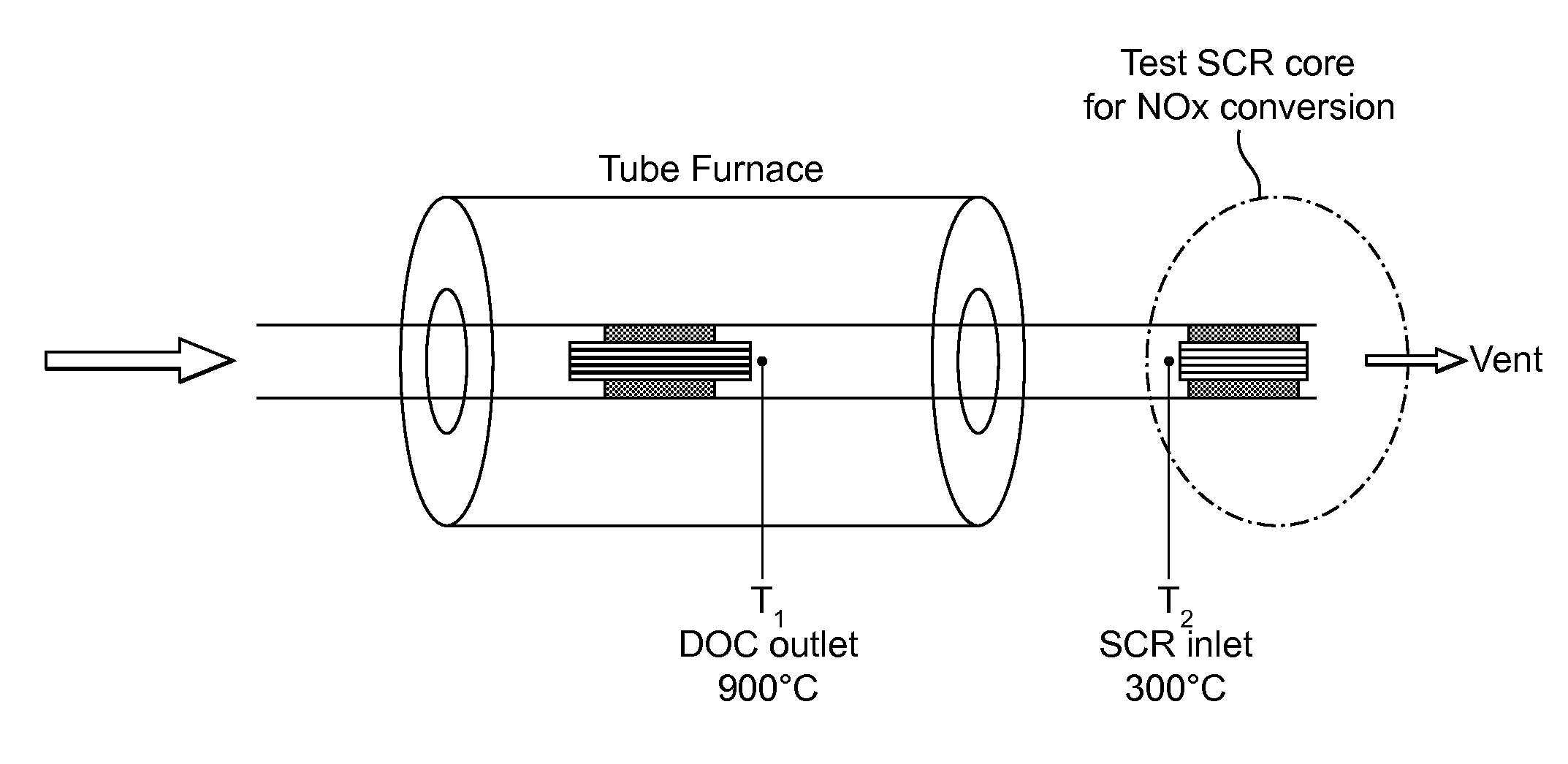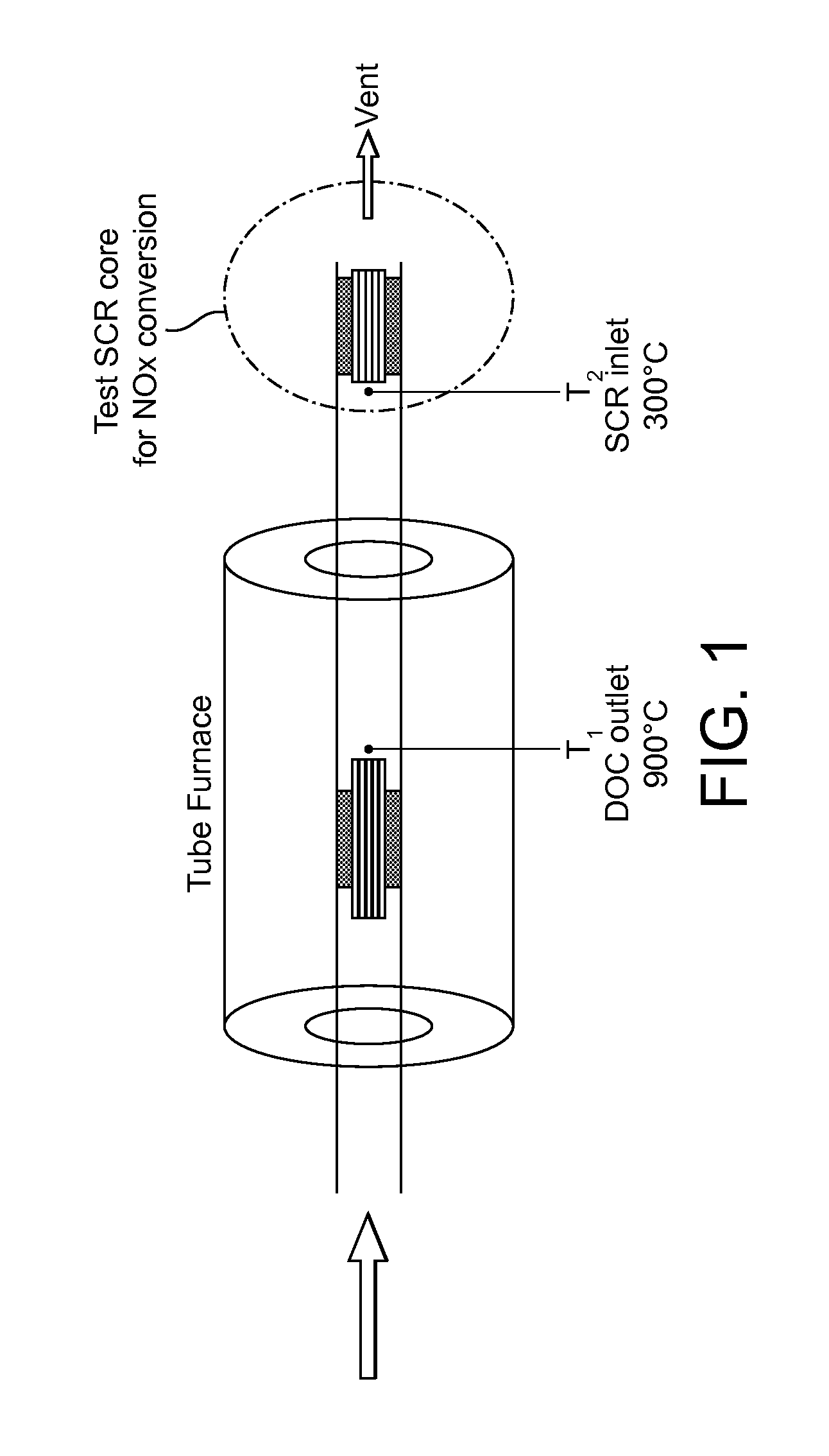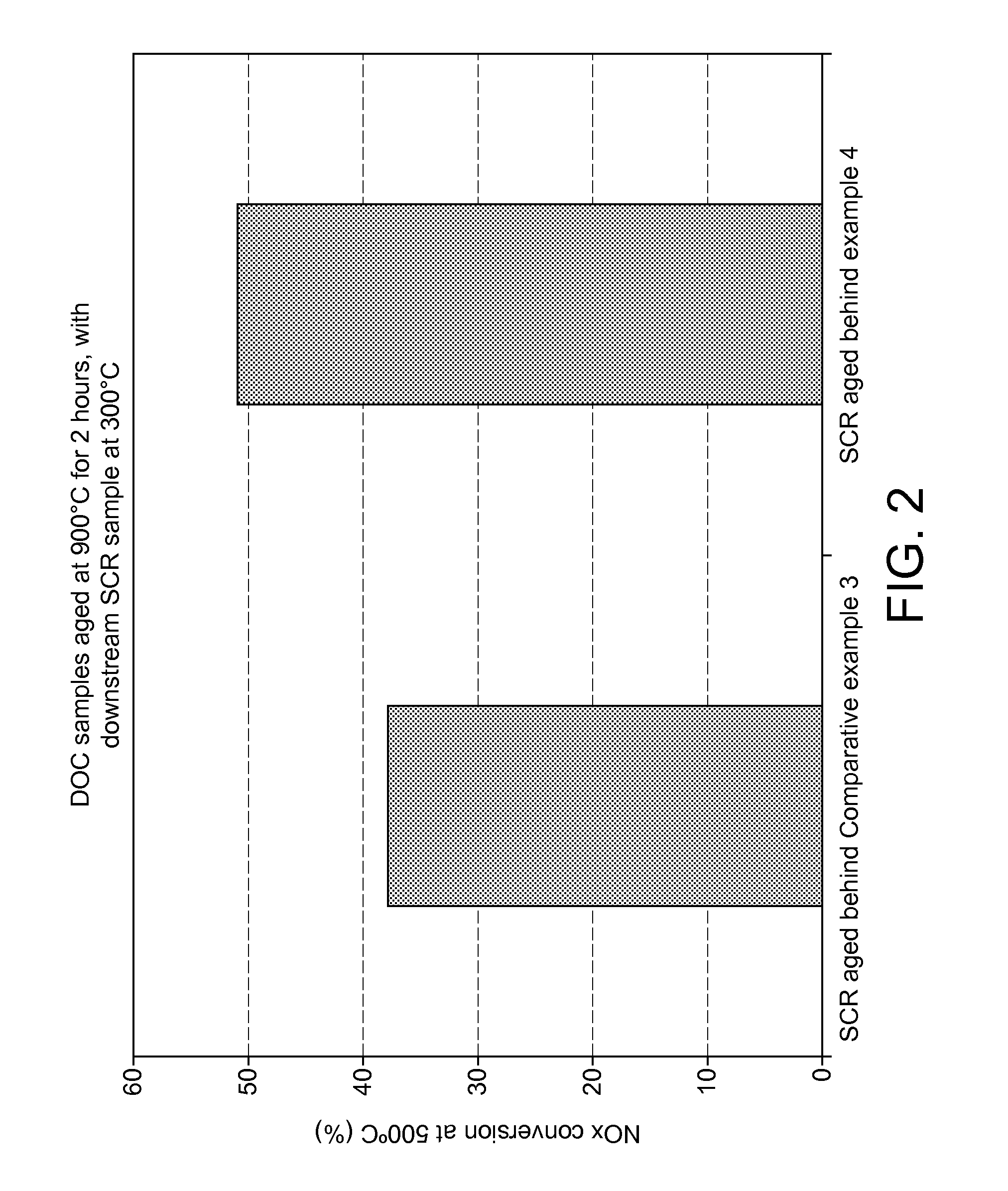Oxidation catalyst for internal combustion engine exhaust gas treatment
a technology of oxidation catalyst and exhaust gas treatment, which is applied in the direction of metal/metal-oxide/metal-hydroxide catalyst, machine/engine, arsenic compound, etc., can solve the problems of unintended occasional engine upset, reduced oxidation catalyst activity, and unintended effects of engine damage, etc., to reduce the amount of expensive and scarce noble metals and effectively clean up
- Summary
- Abstract
- Description
- Claims
- Application Information
AI Technical Summary
Benefits of technology
Problems solved by technology
Method used
Image
Examples
reference example 1
1) Preparation of One Catalyst Layer (Surface Layer Side)
[0136]Pt and Pd (2:1) as active metals were mixed with alumina (Al2O3) as the washcoat material and zeolite as the hydrocarbon adsorbent, and a slurry of the “one catalyst layer” was prepared. The amount of hydrocarbon adsorbent present was 12 g per liter of support and the concentration of active metal was 0.4 wt %. The weight of catalyst per liter of support was 50 g (active metal 0.2 g).
2) Preparation of Other Catalyst Layer (Support Side)
[0137]Pt and Pd (2:1) as active metals were mixed with alumina (Al2O3) as washcoat material and zeolite as hydrocarbon adsorbent, and a slurry of the “other catalyst layer” was prepared. The amount of hydrocarbon adsorbent present was 30 g per liter of support and the concentration of active metal was 1.7 wt %. The weight of catalyst per liter of support was set at 105 g (active metal 1.785 g).
3) Coating onto Supporting Substrate
[0138]Firstly, an NGK 1.3 liter honeycomb support substrate w...
reference example 2
1) Preparation of One Catalyst Layer (Surface Layer Side)
[0139]Pt and Pd (2:1) as active metals were mixed with alumina (Al2O3) as washcoat material and zeolite as hydrocarbon adsorbent, and a slurry of the “one catalyst layer” was prepared. The amount of hydrocarbon adsorbent present was 12 g per liter of support and the concentration of active metal was 2 wt %. The weight of catalyst per liter of support was set at 90 g (active metal 1.8 g).
2) Preparation of Other Catalyst Layer (Support Side)
[0140]Pt and Pd (2:1) as active metals were mixed with alumina (Al2O3) as washcoat material and zeolite as hydrocarbon adsorbent, and a slurry of the “other catalyst layer” was prepared. The amount of hydrocarbon adsorbent present was 30 g per liter of support and the concentration of active metal was 0.3 wt %. The weight of catalyst per liter of support was set at 65 g (active metal 0.195 g).
3) Coating onto Supporting Substrate
[0141]Reference Example 2 was obtained as in Reference Example 1....
reference example 3
1) Preparation of One Catalyst Layer (Surface Layer Side)
[0145]Pt and Pd (2:1) as active metals were mixed with alumina (Al2O3) as washcoat material and zeolite as hydrocarbon adsorbent, and a slurry of the “one catalyst layer” was prepared. The amount of hydrocarbon adsorbent present was 30 g per liter of support and the concentration of active metal was 1.7 wt %. The weight of catalyst per liter of support was 105 g (active metal 1.785 g).
2) Preparation of Other Catalyst Layer (Support Side)
[0146]Pt and Pd (2:1) as active metals were mixed with alumina (Al2O3) as washcoat material and zeolite as hydrocarbon adsorbent, and a slurry of the “other catalyst layer” was prepared. The amount of hydrocarbon adsorbent present was 12 g per liter of support and the concentration of active metal was 0.4 wt %. The weight of catalyst per liter of support was set at 50 g (active metal 0.2 g).
3) Coating onto the Supporting Substrate
[0147]Reference Example 3 was obtained as in Reference Example 1....
PUM
| Property | Measurement | Unit |
|---|---|---|
| temperatures | aaaaa | aaaaa |
| temperature | aaaaa | aaaaa |
| thickness | aaaaa | aaaaa |
Abstract
Description
Claims
Application Information
 Login to View More
Login to View More - R&D
- Intellectual Property
- Life Sciences
- Materials
- Tech Scout
- Unparalleled Data Quality
- Higher Quality Content
- 60% Fewer Hallucinations
Browse by: Latest US Patents, China's latest patents, Technical Efficacy Thesaurus, Application Domain, Technology Topic, Popular Technical Reports.
© 2025 PatSnap. All rights reserved.Legal|Privacy policy|Modern Slavery Act Transparency Statement|Sitemap|About US| Contact US: help@patsnap.com



